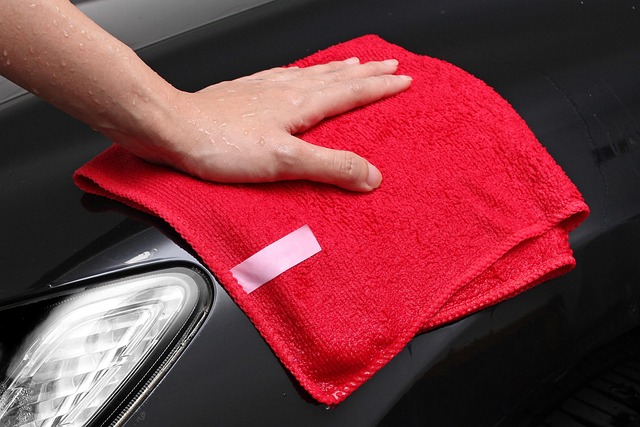Microfiber Revolution: Transforming Car Interiors and Detailing
The world of automotive care and detailing has undergone a quiet yet profound transformation in recent years, thanks to the rise of microfiber technology. This innovative material has revolutionized how we clean, maintain, and protect our vehicles, offering superior performance and efficiency compared to traditional methods. From interior cleaning to exterior polishing, microfiber has become an indispensable tool in the arsenal of car enthusiasts and professional detailers alike.

The Birth of Microfiber in Automotive Care
Microfiber’s journey into the automotive world began in the late 1990s, but its roots trace back to the 1950s when Japanese scientists first developed the technology. Initially used in industrial applications and clothing, microfiber’s potential for cleaning and detailing quickly became apparent. The automotive industry, always on the lookout for innovative solutions, was quick to adopt this versatile material.
The transition from traditional cotton cloths and chamois to microfiber was driven by the material’s superior cleaning properties and durability. Unlike cotton, which often leaves lint and can scratch delicate surfaces, microfiber’s ultra-fine fibers could clean effectively without leaving residue or causing damage. This breakthrough addressed a longstanding challenge in automotive detailing: achieving a thorough clean without compromising the vehicle’s finish.
The Science Behind Microfiber’s Effectiveness
At the heart of microfiber’s effectiveness is its unique structure. Each fiber is split into multiple segments, creating a vast network of tiny filaments. This structure gives microfiber its characteristic properties: high absorbency, excellent cleaning power, and the ability to trap particles effectively.
The fibers in a microfiber cloth are so fine that a single strand is smaller than a human hair. This microscopic size allows the fibers to penetrate the tiniest crevices and pores in a vehicle’s surface, lifting and trapping dirt, oil, and other contaminants. Moreover, the electrostatic charge that builds up in microfiber as it’s used further enhances its ability to attract and hold onto particles.
Revolutionizing Interior Cleaning
Microfiber has transformed the way we approach interior car cleaning. Traditional methods often involved harsh chemicals and abrasive materials that could damage delicate surfaces. Microfiber cloths, on the other hand, can clean effectively with just water in many cases, reducing the need for chemical cleaners.
For upholstery, microfiber’s gentle yet thorough cleaning action is particularly beneficial. It can remove embedded dirt and stains without damaging the fabric fibers. On hard surfaces like dashboards and consoles, microfiber excels at removing dust and fingerprints without leaving streaks or residue. This versatility makes microfiber an all-in-one solution for interior detailing, simplifying the cleaning process and improving results.
Enhancing Exterior Detailing and Paint Care
The impact of microfiber on exterior detailing has been equally significant. From washing to drying, polishing to waxing, microfiber products have elevated every step of the detailing process. Microfiber wash mitts, for instance, have largely replaced traditional sponges, offering superior dirt removal with a reduced risk of scratching the paint.
In the crucial drying phase, microfiber towels have rendered chamois obsolete for many detailers. Their high absorbency allows for quick and efficient drying without water spotting. For polishing and waxing, microfiber applicator pads provide an even application and can be used with less product, leading to more efficient use of detailing compounds and a better finish.
Environmental and Economic Benefits
The adoption of microfiber in automotive care has brought about notable environmental and economic benefits. The reduced need for chemical cleaners means fewer harmful substances are released into the environment. Additionally, the durability of microfiber products translates to less waste compared to disposable cleaning materials.
From an economic standpoint, the initial investment in quality microfiber products can lead to significant long-term savings. Their reusability and effectiveness mean fewer replacements are needed over time. For professional detailers, the efficiency gains from using microfiber can translate to faster service times and higher customer satisfaction, ultimately improving their bottom line.
Future Innovations and Challenges
As microfiber technology continues to evolve, we can expect to see even more specialized products tailored for specific automotive applications. Innovations in fiber composition and weaving techniques may lead to even more effective cleaning tools. However, the industry also faces challenges, particularly in addressing the environmental impact of microfiber shedding during washing.
Research is ongoing to develop microfiber products that shed fewer particles, potentially through the use of biodegradable materials or improved manufacturing processes. As environmental concerns grow, finding sustainable solutions will be crucial for the continued growth and acceptance of microfiber technology in automotive care.
The microfiber revolution in automotive care represents a convergence of material science, environmental consciousness, and the ever-present desire for efficient and effective vehicle maintenance. As this technology continues to evolve, it promises to further transform the way we care for our vehicles, offering solutions that are not only more effective but also more sustainable. For car enthusiasts and professionals alike, embracing microfiber technology means stepping into a future where automotive care is simpler, more efficient, and kinder to our vehicles and the environment.





